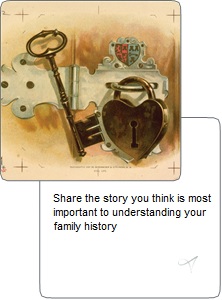Addressing the Complexities of Communication and Family Learning

Families that have accumulated significant assets want to know how to best prepare the “rising generation” to help them maximize the benefits available to them, while also minimizing the unique challenges that occur when navigating the world of wealth.
Younger family members may have different approaches when it comes to family wealth. Understanding where these approaches come from is essential when creating an effective family education program. Consider these family members to be on a continuum with engaged learning in the middle. People who fall in the middle are interested and eager to learn how to be excellent stewards of wealth.
Members of the rising generation who are proud of the family’s accomplishments and related wealth resulting in a positive relationship with the family’s financial means, can be empowered through education to be in a better position to help the wealth endure and even to grow it for future generations. For those further away from center on one extreme, their identification with being wealthy can result in them becoming overly generous with their friends (or to be overzealous or imprudent in making new friends). If left without redirection and guidance, they can end up moving from enjoying their purchasing power to carelessly over-spending and running up debt. They tend to believe that the money is theirs and will always be theirs: they are in danger of falling into the trap of entitlement.

On the other end of the continuum, family members may be conflicted about family wealth and will need support to understand their love/ hate relationship with it. They often want to hide the fact that they are from a wealthy family. Although they might enjoy elaborate family trips and staying at luxurious resorts, they do not want their friends or coworkers to know that they flew on a private jet or attended a family financial meeting. For them, being associated with the word “wealthy” can make them feel anything from awkward, to personally slighted, to the extreme of being downright offended. They want to avoid being associated with anything related to money and can become susceptible to being taken advantage of or of being blithely unaware of how much they are giving away to charity.
How do you engage family members with a spectrum of beliefs, feelings and attitudes about money and wealth?
To engage family members of all ages, with their disparate beliefs and approaches to money, the best place to start is with what matters most: values. Our behaviors are guided by underlying core values. We become easily offended when our core values are not respected, and yet we may not always be living up to our expressed values ourselves. Since our core values are often subconscious, we do not readily access them or articulate them when making decisions or taking actions.
If someone is conflicted about money and has a negative reaction to being known as wealthy, they have a core value that is at stake. Before you can begin to talk about or instruct about money with them in a meaningful way, you need to know what that value is. The same holds true for someone who overspends and does not make good decisions for saving or investing. Clarifying which of their values are driving their uncontrolled spending, or a lack of understanding the importance of saving, is essential before you can begin a conversation about budgeting and wealth stewardship.
Values-based activities
Engaging a multigenerational family in activities designed to reveal their shared core values helps everyone understand what drives the family in terms of making money, investing money, saving money and giving money away.
As a wealth sustainability coach, I work with an interdisciplinary team to help families elucidate their values through a number of engaging activities. I highlight three favorites below.
1. Family History Cards – designed and curated by Karen McNeill, our family historian, with fascinating images on one side and questions on the other to elicit conversation and exploration of where family values originated.

In one family, using the cards gave a daughter an opportunity to ask her mother questions about her mother’s childhood growing up in three different countries – something her mother had never talked about in any detail.
In another family, a father shared stories about his experience of growing up destitute, and how he vowed to make sure there would always be more than enough money for his family so they would never lack anything.
Activities like this facilitate meaningful storytelling that helps family members understand what motivated past behaviors. These activities also provide families the ability to step away from a “don’t ask, don’t tell” approach toward more open dialogue about what has shaped the family’s current values.
2. Money Paths – various versions of this exercise have been developed by several organizations, including our team at Ascent. During this activity, family members each draw a map of their most impactful experiences with money—from their earliest memory to the present day. They then share their money-story with the rest of the family through guided facilitation. As the stories unfold, connections are revealed between the choices made and the values that generated the initial behaviors, allowing individuals to see how their core beliefs and values relating to money were formulated.
For instance, a woman remembered how, when she was nine years old, she would sneak an additional thirty-five cents from her mother’s change purse along with her twenty-five cents for milk so that she could buy her favorite treat at school. She recalled how hurt and upset her mother was after discovering that she had been knowingly taking more money than her mother had allowed. She saw how that breach of trust affected her mother, and that caused her to develop a belief that it was wrong to not only take from others, but that it was also wrong to ever want more for herself at all. She realized how her conflicted relationship with money started at that young age; however, after the facilitator reassured her that ninety-nine percent of children engage in similar acts of petty theft as part of normal child development, she was ultimately able to overcome the guilt she had felt for decades. Once free of the negative emotions stemming from her childhood experience she subsequently had greater comfort addressing issues of wealth.
– James Hughes, Jr.
3. Values Clarification – using a color-coded system of cards and stickers, family members from multiple generations experience an easy and enjoyable way to clarify and articulate their personal values while delighting in the visual representation of groupings of shared values. They get to view the colorful ‘values pyramid’ each family member creates for a vivid snapshot of what themes and priorities matter most in the family.
The values-clarification process often surprises families with how transformative it can be for relationships with each other and with money. For example, in one family where the mother had a contentious relationship with her adopted daughter, they discovered that they shared many values with similar priorities: they just had different ways of expressing those values.
In another family, a mother’s top core value of ‘beauty’ gave her family members a better understanding of what drove her relentless desire for order and tidiness and how unnerving even a little clutter could be for her. There was a new respect for her value that helped her family members be less reactive and helped them articulate their boundaries and needs in
relationship to hers. Their overarching value of ‘family first’ made it possible for them to change their way of relating to one another to allow for greater ease of self-expression while remaining mutually respectful.
Conclusion
By first defining and articulating individual values and then clarifying and aligning family values, families establish the foundational cornerstone of their communication and education plan. Once this is achieved, the family can be assisted in connecting their family values with the family “valuables,” while also developing a shared framework for learning about finance and building skills to make shared financial decisions. As James Hughes, Jr. writes in his seminal book, “Family Wealth: Keeping it in the Family,” wealth needs to be addressed not only in financial terms, but also in social, intellectual and human terms. By starting with values—the most important driver of human capital—the family will have greater ease of relating and discussing all that is involved in learning how to be excellent stewards of their financial capital.

| Family Office Exchange (FOX) is pleased to present the inaugural Rising Generation Leadership Program for the preparation of future family leaders. The learning series is focused on educating future family leaders so they are armed with the quantitative and qualitative skills needed to thrive in life, business, and wealth stewardship. Participants will attend educational sessions and engage in peer networking and experiential activities. Learn More → |